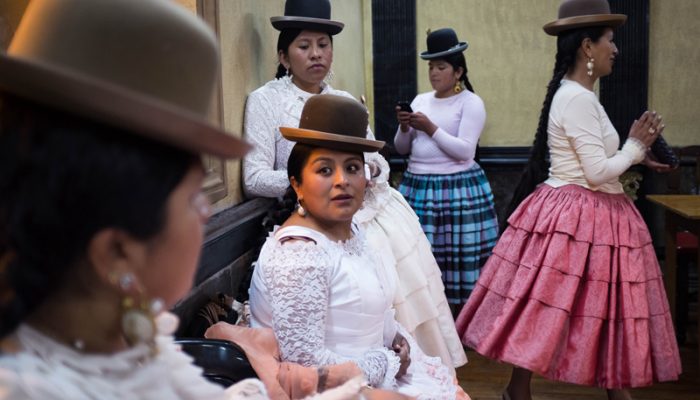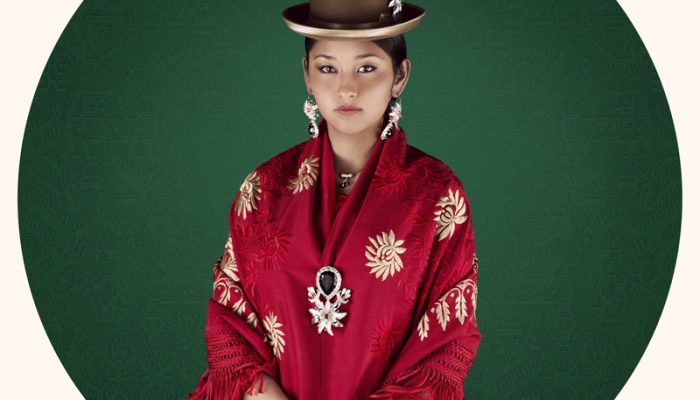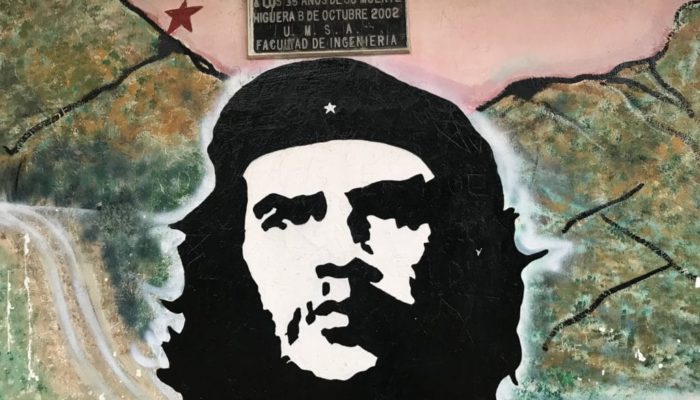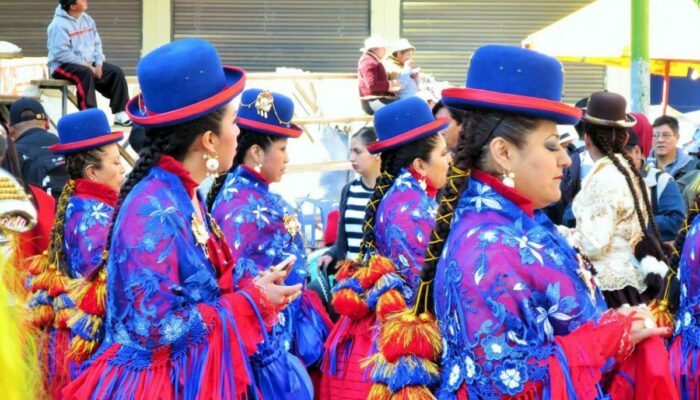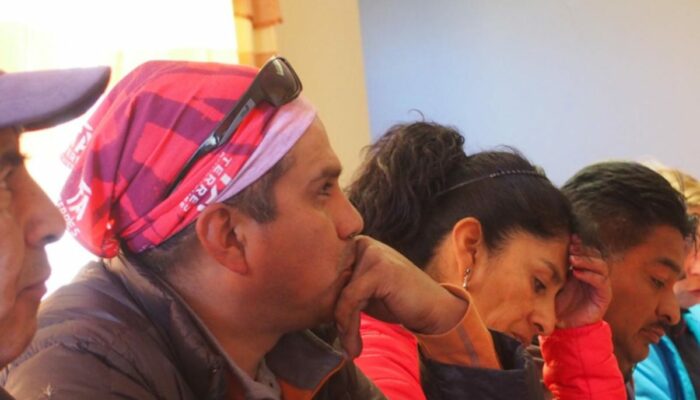"CHOLITAS: THE REVIVAL OF A GENERATION", interview with Delphine Blast.
Originally from Brittany and a professional photographer for six years, Delphine Blast now exhibits between Paris, La Paz and Amsterdam! In this interview, she talks to us about her career, her relationship with Bolivia and her project: “Cholitas: la revanche d’une génération” (Cholitas: the revenge of a generation), the opening of which will take place on 7 November 2017 in Paris at The Chata Gallery . Delphine has also just released the book “Cholitas” published by Editions Bessard.
For those who haven’t yet had the chance to discover Bolivia, you should know that the term “cholitas” refers to mixed-race women of Aymara origin. Their style of dress varies from region to region. In La Paz, they are easily recognisable with their black bowler hats covering long plaits and dressed in their colourful “pollera” with multiple ruffles. They are also very often seen wearing a square of aguayo on their backs.
Long stigmatised and discriminated against, it would seem that these women are now being seen in a new light, as genuine stakeholders and fashion icons in Bolivian society.
Delphine, can you tell us a bit about yourself and your background?
I was attracted to photography when I was quite young, but at school I was told that there weren’t many opportunities. Nobody in my family was a photographer or came from an artistic background. For me, photography represented something magical, synonymous with escape and travel.
I started travelling when I was 17. What was important to me was meeting new people and new cultures. I was looking for a real culture shock and went to Latin America. My first trip was to Bolivia 10 years ago and I fell in love with the country. I left with a camera (editor’s note: a camera given to me by my parents for my A-levels). I started taking pictures and was blown away by all the colours and smells. I found the Cholitan women inspiring. They impressed me with all the stuff on their backs! I was there for five months, working for an NGO. At the time, I was finishing my studies in International Relations.
“Beyond the landscape” until it all clicked!
After that placement, I worked at the Alliance française in Santo Domingo in the Dominican Republic as a cultural attaché for three years. At the same time, I worked for RFI and continued to take photographs. I was working on a book about the Dominican Republic. There weren’t really any good books on the country and the image of the Dominican Republic was a bit too much like Punta Cana, beaches and coconut palms, whereas there was much more to it than that. I worked on a book called “Beyond the Landscape”. It wasn’t published for financial reasons, but the aim was to go beyond the clichés. I met some great people, from the fishermen in the village of Rio San Juan in the north of the island to the people working in the larimar (precious stone) mines.
When I was in the Dominican Republic, I was about to turn 30 and was getting a bit bored with diplomacy. I thought I’d go back to France and do some photojournalism training.
I wanted to give it a go and not have any regrets. So I gave up my dream job under the coconut trees to go back to my parents’ house in Brittany! I then did a year’s training in Paris. I’ve been a photographer for six years now.
And why a return to Bolivia?
After three years in Paris, I knew that Paris was transitory and that I had to go back abroad. I’d always wanted to live abroad and initially went to Colombia. I quickly realised that it wasn’t the country I wanted to settle in. In the end I chose Bolivia. I fell in love with it and there are very few photojournalists there. It’s a country I’ve always liked and it was my first love affair with Latin America. I returned there in 2016 with the aim of doing this work on the cholitas, echoing the image I had of these women ten years ago. I became interested in their history.
I realised that they had been victims of discrimination, but that today they were present in politics, that they had high positions and that there were also modelling schools.
How did the Cholitas project and photo shoots go?
I went to La Paz and knew that I wanted to do some studio photos. I was lucky enough to meet a number of people who helped me enormously with my project, including the Director of the San Francisco Museum, José L. Ríos, who kindly lent me a room in the museum. The museum’s location right in the centre of La Paz was extremely practical. I was extremely lucky. I went to parties in El Preste to find the cholitas and explain my project to them. Not all of them accepted. An announcement had also been made on Facebook by the museum director. Those who accepted came to the museum. My project was refined over time to focus on the younger generation of cholitas paceñas (from La Paz).
They lent themselves to the game and were quite curious, very kind and available. Some had graduated from modelling schools. My aim was to show a wide range of profiles and I concentrated on the younger generation. There were cholitas from all walks of life, academics, dentists, businesswomen and shopkeepers.
How is the project structured?
The project is called “Cholitas: the revenge of a generation” and has three aspects. Firstly, there’s the historical aspect, with research and investigation work (by Bolivian photographers Julio Cordero and Damián Ayma Zepita), the studio portrait project, which lasted between two and three weeks, and a third part of reportage. I followed some people in their daily lives, cholitas television presenters, and others who had opened their modelling schools.
I took photos until the end of July and I’m currently preparing the exhibition in Paris on 7 November at The Chata Gallery, which will include these three parts. I haven’t yet shown the daily life reportage part. And the book only includes this series of studio portraits.
Can you give us a few names of photographers who inspire you?
I love the work of the American photographer Saul Leiter and Levitas, who did a piece on geishas. I’m also very inspired by African photography, with images by Omar Victor Diop and Malick Sidibé.
Exhibition dates and venues to remember!
The first exhibition took place in La Paz at the end of March 2017 with the French Embassy and the European Union at the San Francisco Museum. She will be in Bordeaux in January 2018 as part of a group exhibition, then exhibited again in Bolivia at the Alliance française de Santa Cruz de la Sierra in April 2018.
Delphine is currently exhibiting in Amsterdam and will also be signing her work at Paris Photo, which will be held from 09 to 12 November 2017 at the Grand Palais.
In Paris, “Cholitas, la revanche d’une génération” will be on show from 7 to 20 November at The Chata Gallery at 14 rue du Château d’Eau.
Many thanks to Delphine Blast!
Photo credit: Delphine Blast
www.delphineblast.com
Facebook: Delphine Blast – Photographer
Instagram: Delphine Blast
Book: Cholitas published by Bessard
Interview by Marie-Florine D.

